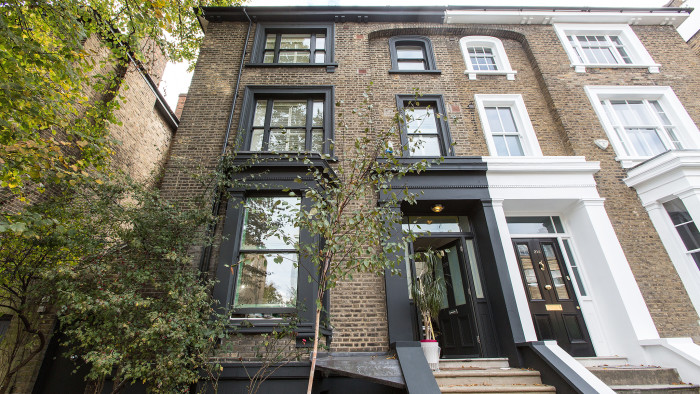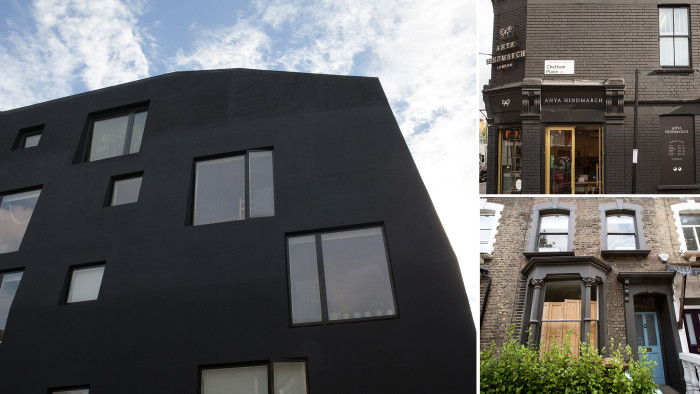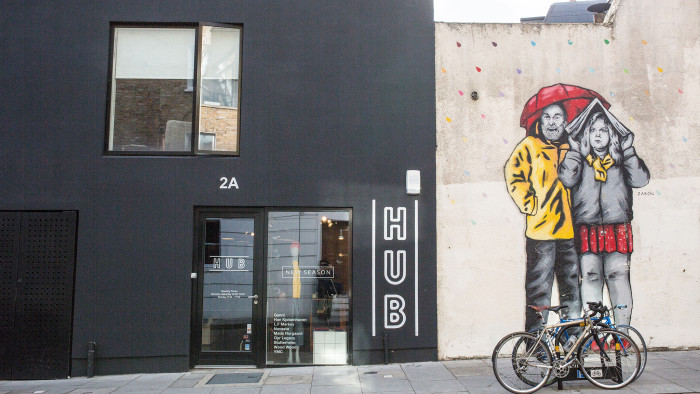Could a Halloween makeover boost the value of your property?


Roula Khalaf, Editor of the FT, selects her favourite stories in this weekly newsletter.
Taking the children trick or treating this weekend? Well, come to the east London borough of Hackney, as there is something decidedly spooky going on in my local property market.
More and more houses are being painted black. And estate agents think it is working some black magic on asking prices.
Over the past few years, the exterior of hundreds of period houses in Hackney and Shoreditch, home to London’s Silicon Roundabout, have undergone a dramatic goth makeover.
This ranges from the “collars and cuffs” of the window frames, sills and cornices on Victorian terraces being painted in dark shades, to an all-over “paint bomb” effect where everything — including the brickwork — is blacked out.
The style is proving such a hit with PWBs (people with beards) I suspect it could soon become a “thing” outside east London — but the treat of higher sales prices comes with a few tricky issues.
Before I come to that, where did the trend come from? For a while now, crumbling old warehouses, former factories and pubs on the edges of the City of London have had their insides ripped out and their outsides painted black before being turned into edgy shops, work spaces and hang-outs for the digerati (I refer you to Shoreditch House). Much cheaper than a total redevelopment, the slick black nevertheless screams gentrified price inflation. So it seems logical that private homes are following suit.
A black paint job alone will make it stand out on social media — the modern equivalent of the estate agent’s window — and can “definitely boost value” as such a striking look means buyers are more likely to click for more details online or increase the property’s “kerb appeal”, according to Edward Taylor, who manages Foxtons’ Hackney branch.
He has sold several Hackney period “black outs” for well over £1m in the past year, and has more on his books.
“Some of the more expensive properties that we’ve sold in Hackney tend to be painted dark on the outside,” he says. “There is a very finite window of attention from buyers before they swipe on to the next property, and it does immediately grab your attention.”
By contrast, the 1970s trend of pebble dashing the exterior of your house definitely has a negative effect on asking prices. But before any sellers run out to B&Q for a few tins of matt black, think carefully.

Debby Blow, who manages the Hackney branch of Keatons, calls the trend the “Down Pipe effect”, in reference to the name of the Farrow & Ball paint most favoured by hipster renovators.
It’s not actually black, she tells me, but a “dark lead grey”. The F&B website says the colour — at a scarily expensive £65 for five litres of exterior wall paint — “was inspired by the colour used to paint downpipes and guttering, [but] has been embraced for use inside the home with fanatical zeal”.
While she agrees this look will make your property stand out hugely on the street, if the interior is not up to scratch then buyers will rapidly fade away. Many sellers favour painting the inside of their sash windows in the same shade, she notes, a less dramatic but equally popular look.

It’s not a hit with everyone, though. Buying agent Henry Pryor made gagging noises down the phone when I emailed him some examples of the trend, saying he’d “pay less, not more” unless his client was Harry Potter’s Sirius Black. Others suggest the black exterior trend is a pale imitation of Georgian stock brick (most famously used in Downing Street). Several brand new housing developments looking like black boxes with windows have already sprung up.
Painting Victorian houses in bold colours is, of course, nothing new (think of the rainbow palette in west London’s Notting Hill or Clifton in Bristol). Black is a bit more “Camden Market”, but it seems the London trend could actually be a US import. There are many fine old Victorian houses in San Francisco, known as the “Painted Ladies”, and some have had their pastel exteriors blacked out in the past decade.
I agree there is something very smart about those clean black lines on a detached house. However, one black (sorry, Down Pipe) coloured house smack bang in the middle of a terrace looks decidedly weird.
It’s definitely not as jarring as the infamous red and white striped house in Kensington, but if one of my neighbours’ houses underwent a ghoulish exterior makeover, I’d be worried it could negatively impact on the value of my home.
I called Hackney council’s planning department to see if they had any magic spells for containing the spreading black gloom, but the general view was unless the property is in a conservation area or a listed building, there’s not much you can do.
Surprisingly, the Victorian Society (whose director, Chris Costello, also lives in Hackney) also takes a benign view. Black-trimmed houses may look pretty terrifying “but are essentially reversible”, he says.
In fact, dark painted window frames (just the frames, mind, not the sills and surrounds) are actually quite authentic, although the Victorians preferred dark browns and blues. Painting the brickwork black is not something he condones, as, like the blight of pebble-dash, removing it could damage the exterior.
In past times, many houses would inadvertently have achieved a similar effect through old-fashioned soot. When the trend for Halloween houses is finally declared passé, tomorrow’s owners will find that dark-hued masonry paint is much harder and more expensive to remove than a grimy layer of dirt.
Claer Barrett is the editor of FT Money; claer.barrett@ft.com; Twitter: @Claerb
Comments